Introduction:
Recently declassified Soviet documents describe the design considerations for Energia / Buran, (as it eventually became known).
Here’s my translation of the introductory pages from the technical design, signed off in 1976, by Glushko. It gives a fascinating insight into the options, and roads not taken.
As usual, acronym translation is not reliable.
1976, OK-92 and REUSABLE SPACE SYSTEM WITH THE OK-92 ORBITER
Technical reference, Signed Glushko
The creation of a reusable space system in the USSR is aimed at providing at a qualitatively new level the solution of a wide range of tasks in near-Earth space in the interests of the country's defence, national economy and science, and at creating the necessary prerequisites for introducing progressive principles of spacecraft construction and operation into rocket and space technology in order to increase the efficiency and cost-effectiveness of their use.
In 1975, NPO Energia developed technical proposals for a comprehensive rocket programme, the main component of which is the reusable space system (ISS).
Due to the lack of tactical and technical requirements for the ISS formulated by the Ministry of Defence, the design of this system was based on the results of extensive research conducted in a number of research organisations of the industry and the Ministry of Defence.
One of the main requirements for the development of technical proposals for a reusable space system was the creation of a system that would have the same basic characteristics as the American reusable Shuttle system.
This should equalise the potential of the USSR and the United States for military and peaceful exploration of near-Earth space, and exclude situations in which the appearance of the Shuttle system could be associated with technical surprise in the military aspect of the use of outer space. (1)
The developed reusable space system envisaged the use of the OS-I20 orbital vehicle (OS), which is in many respects similar to the American orbital vehicle being developed under the Space Shuttle programme
In Volume IB of the "Technical Proposals" the composition, purpose and main characteristics of the ISS with the OS-120 orbiter, which fulfils the above requirement, are given.
The OS-120 orbiter is a reusable spacecraft of the aircraft type, which provides it with wide opportunities for lateral manoeuvre during descent and horizontal landing on a special landing strip.
Oxygen-hydrogen thrusters of the P-stage of the launch vehicle are placed in the orbital aircraft.
The construction of the ISS launch system (launch vehicle RLA-130), unlike the American "Shuttle" system, where two solid-fuel boosters are adopted as the first stage, envisaged the use of four liquid-propellant rocket blocks with the boosters using the mastered fuel components 02+RG-І in the first stage.
This choice was based on a careful consideration of the state of solid propellant engine building in our country, as well as the desire to obtain a greater energy yield of the first stage, to compensate for losses in the payload due to the higher, compared to the U.S. geographical latitude of the launch. (2)
In addition, it took into account the possibility of obtaining a lower final mass of the first stage blocks, which simplifies the problem of their salvage on re-entry for reusability.
The suspended fuel compartment of the P stage, with the mass of the propellant to be refuelled approximately equal to the mass of the Shuttle system propellant, is accepted in the project with worse mass characteristics, which is connected with the existing lag in mechanical properties of structural materials and in the field of technology of manufacturing large-size tank systems.
Taking into account this circumstance, the use of liquid rocket blocks with increased energy capabilities , (as compared to solid-propellant rocket blocks), on the first stage also seems reasonable.
During the development of the second variant of the ISS some peculiarities and difficulties of the project implementation were discovered, connected with insufficient experience in creation of elements of aerospace systems, capabilities of industrial enterprises, testing and development base and absence in our country of heavy transport aircraft of Boeing 747 type for transportation and initial stage of flight testing of the orbital spacecraft. (3)
In the course of subsequent studies of the ISS and in pursuance of the decision of the IMS NTS of 29.UP.75. г. on optimisation of main tactical and technical characteristics, and refinement of the system design, NPO Energia developed an alternative variant of the reusable space system with a vertical landing vehicle (MTK-VP), which differs both in the design of the vehicle itself and its main technical characteristics, (absence of strongly developed wings, mass ~90 t, lateral manoeuvre during descent from the orbit 800-1800 km, vertical landing on the ground), as well as in the parameters of the launch system (launch vehicle RLA-130V with a launch mass of 2380 t, with 6 lateral modular units as the I stage and the central unit with a working fuel reserve of 455 t and oxygen-hydrogen liquid propellants as the II stage). (3)
The creation of this ISS variant was aimed at eliminating a number of difficulties in implementing the proposals for the ISS with the OS-120 orbiter, identified during its development and, according to initial ideas, simplified cooperation with the main related organisations and reduced the timeframe for the creation of the system as a whole.
At the same time, some deterioration of flight performance was allowed in terms of reducing the lateral manoeuvre during descent and landing.
However, in-depth studies of the MTK-VP variant revealed the necessity of solving new problems in its development related to the lack of means for flight testing, transport in the assembled state, creation of a number of landing sites for regular and emergency landings and complexity of operation.
These problems, as well as the low reliability and difficulty of development of parachute-jet systems for landing and landing of objects with large mass and the problematic nature of reusability, showed the inexpediency of choosing a vertical landing orbital vehicle for a reusable space system. (4)
Design studies carried out in the direction of further optimisation determined the variant of reusable space system with orbital spacecraft OK-92, the distinctive feature of which in comparison with OS-120 is the transfer of oxygen-hydrogen liquid propellants to the fuel compartment of the 2nd stage of the launch vehicle and equipping the orbital spacecraft with two commercially available Solid Rocket Boosters.
These measures, on the one hand, energetically and structurally decouple the rocket launch system and the orbiter and, on the other hand, give the orbiter new valuable qualities. (5)
The orbiter OK-92 will be capable of normal aircraft landing, which will reduce the size of the required landing strip and allow the orbiter to land on existing Class I aerodromes. This possibility in combination with a lateral manoeuvre during descent from orbit within +2200 km provides descent and landing of the orbiter from almost any turn, which is especially important when there is a need for urgent termination of space flight.
In addition, significant advantages of the orbital spacecraft will include the possibility of autonomous flight development, the ability to independently relocate the ship from alternate aerodromes to the launch aerodrome, safer landing with working engines, more flexible cooperation in the creation of OC and launch system.
Below are preliminary materials on justification of the reusable space system with orbital spacecraft OK-92 and its main flight and operational characteristics.
(Source material ends)
I speak minimal Russian, so if you have any corrections based on the documents above, please contact me in the comments.
Notes by Nick:
This makes it seem like they didn’t want the orbiter to look like a weapon?
Liquid fuelled boosters were chosen for higher performance, and with the clear goal of making them reusable.
This looks a LOT like the origin of the AN-225 Mriya cargo plane.
They worked on a vertical landing “tail sitter” version!
Separating the orbiter system from the launch vehicle system is seen as a key benefit of the Energia / Buran design.
Aspects where Buran is a superior design:
Some who do not dig too deeply take one look at Buran, and assume it’s a copy of the US Space Shuttle. This similarity is only skin deep.
The most dramatic difference is that the USA shuttle main engines are a key part of getting the whole system to orbit, whereas Buran is pretty much just another payload for Energia.
This simple difference makes the operation VERY different.
For the development cost, the Soviet Engineer’s effectively gained a heavy launcher as part of the project. Whereas the US system meant any payload had to fit in the shuttle bay, was weight limited, and had to be safe to transport with a human crew.
There’s a good Wikipedia article that covers shuttle safety with regard to carrying a Centaur upper stage:
https://en.wikipedia.org/wiki/Shuttle-Centaur
Indeed, because the boosters were effectively a normal liquid fuelled rocket, designed to work independently, (they became the Zenit launcher), they got 3 launch systems for the price of one.
Other differences:
Not using solid rocket boosters on crew rated vehicles. Much safer.
As described above, the liquid fuelled boosters may reuse a lot easier. (The bulges at the top of the Energia boosters are dummy parachute packs)
It’s capable of flying without a crew.
Buran could dock with a Soyuz or another Buran. This also meant rescue was an option if Buran reached orbit damaged. The first crewed flight would have launched empty, and have crew delivered on a Soyuz. They would then choose how to land, Soyuz or Buran.
A crew ejection system.
Bonus Item: N1 proposal for N1-7L to N1-12L
Illustrations have been declassified of a version of the N1 with six grid fins instead of four!
What is going on here? Alex Schliadinsky has proposed that the extra grid fins are there to compensate for a reduction in stability due to the removal of the skirt from the base of the 6L for the 7L and later. This sounds like a very good explanation.
This editions cool link:
Collected Buran / Energia images built from stitched frames, which means you probably won’t have seen many of them before.
This editions cool graphic:
From the above link.


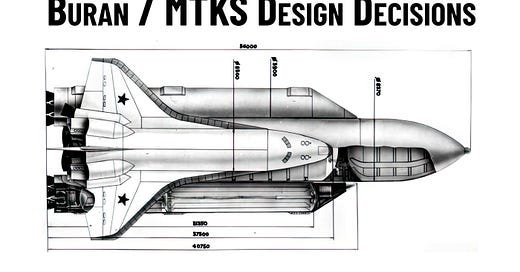



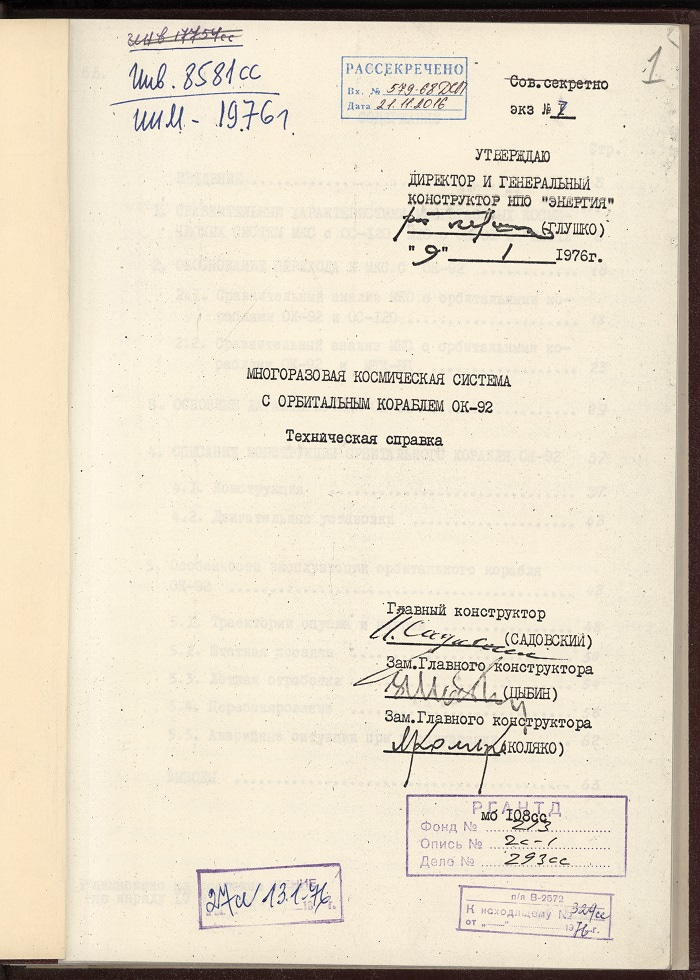
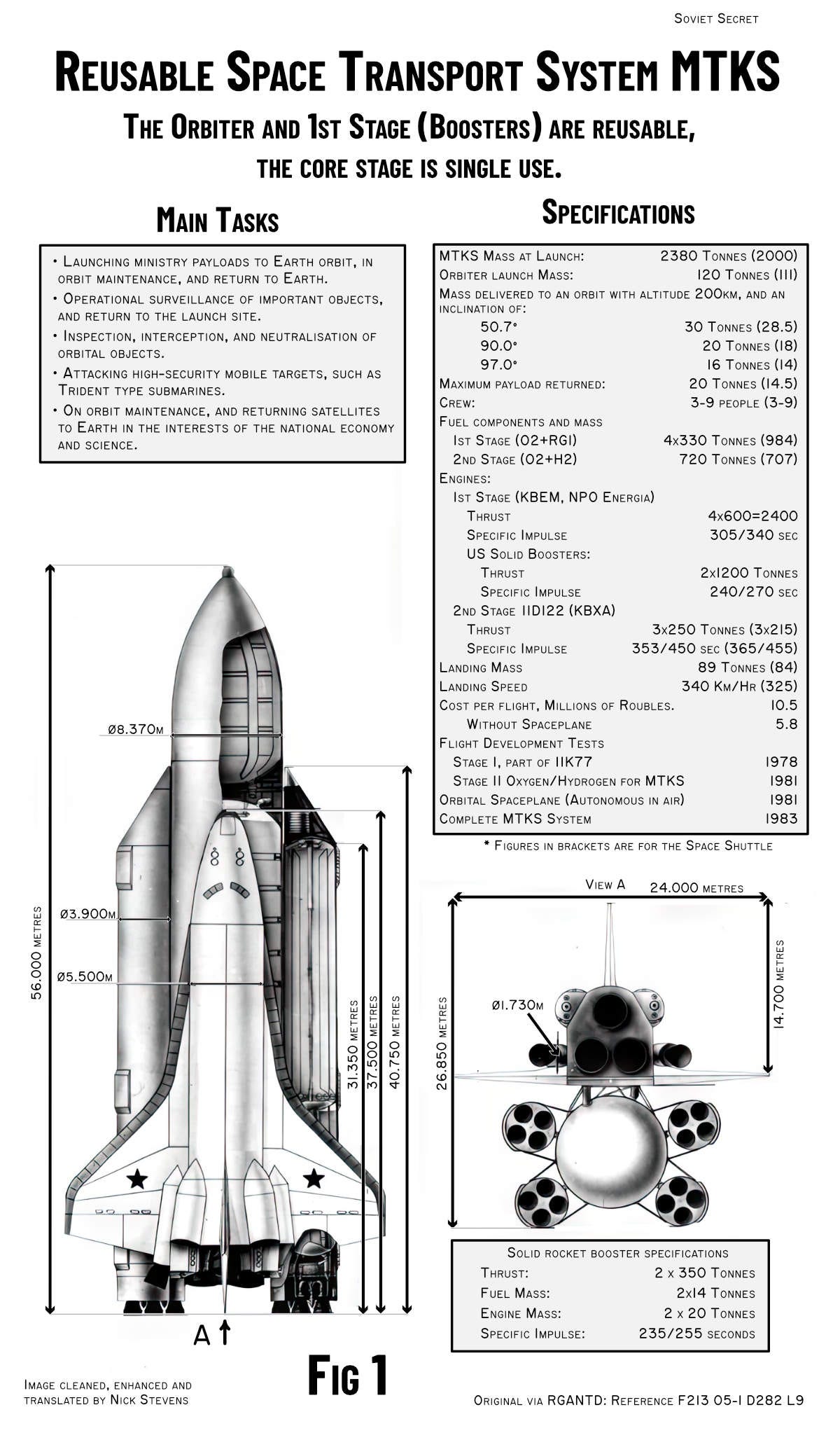
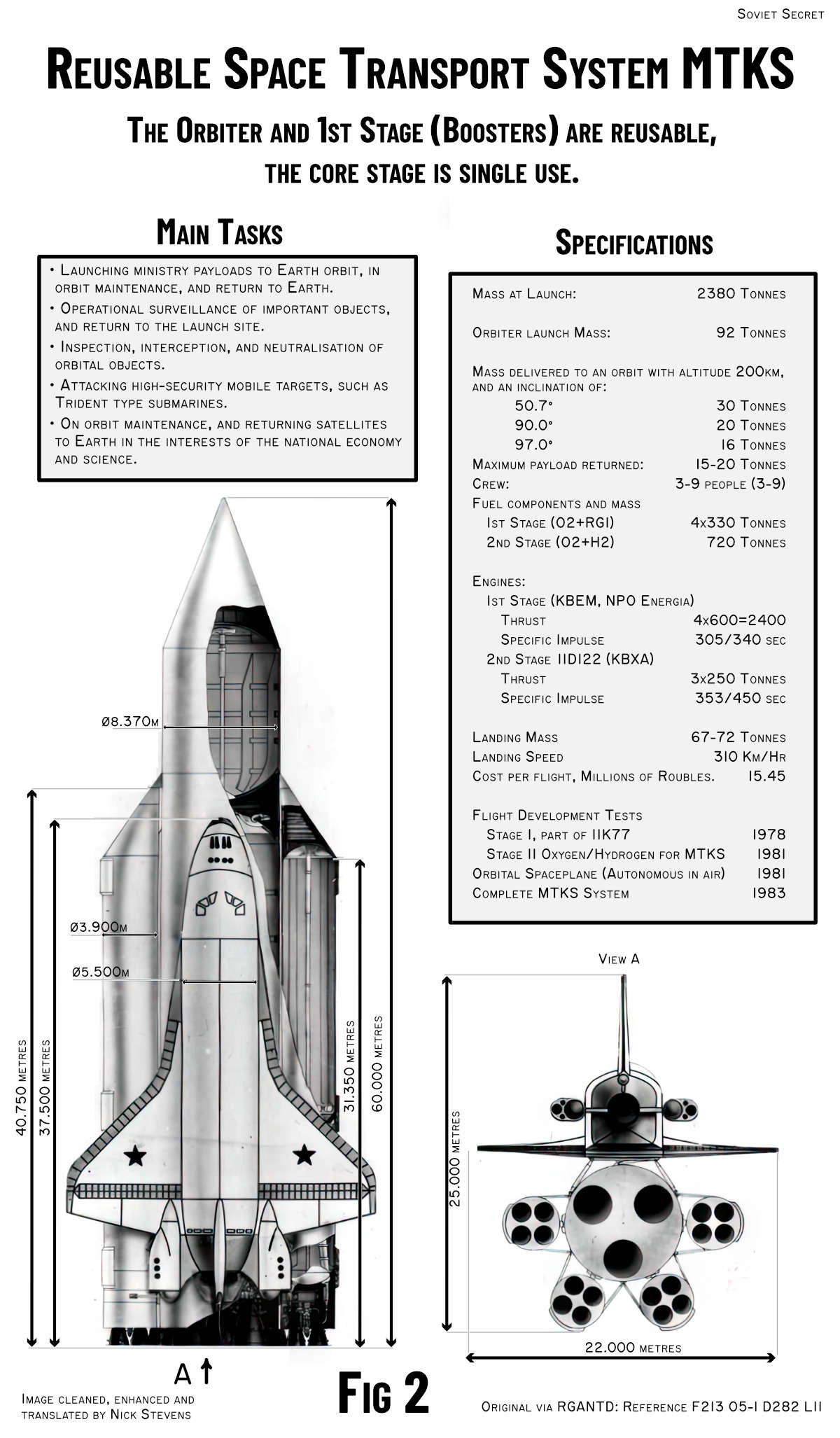

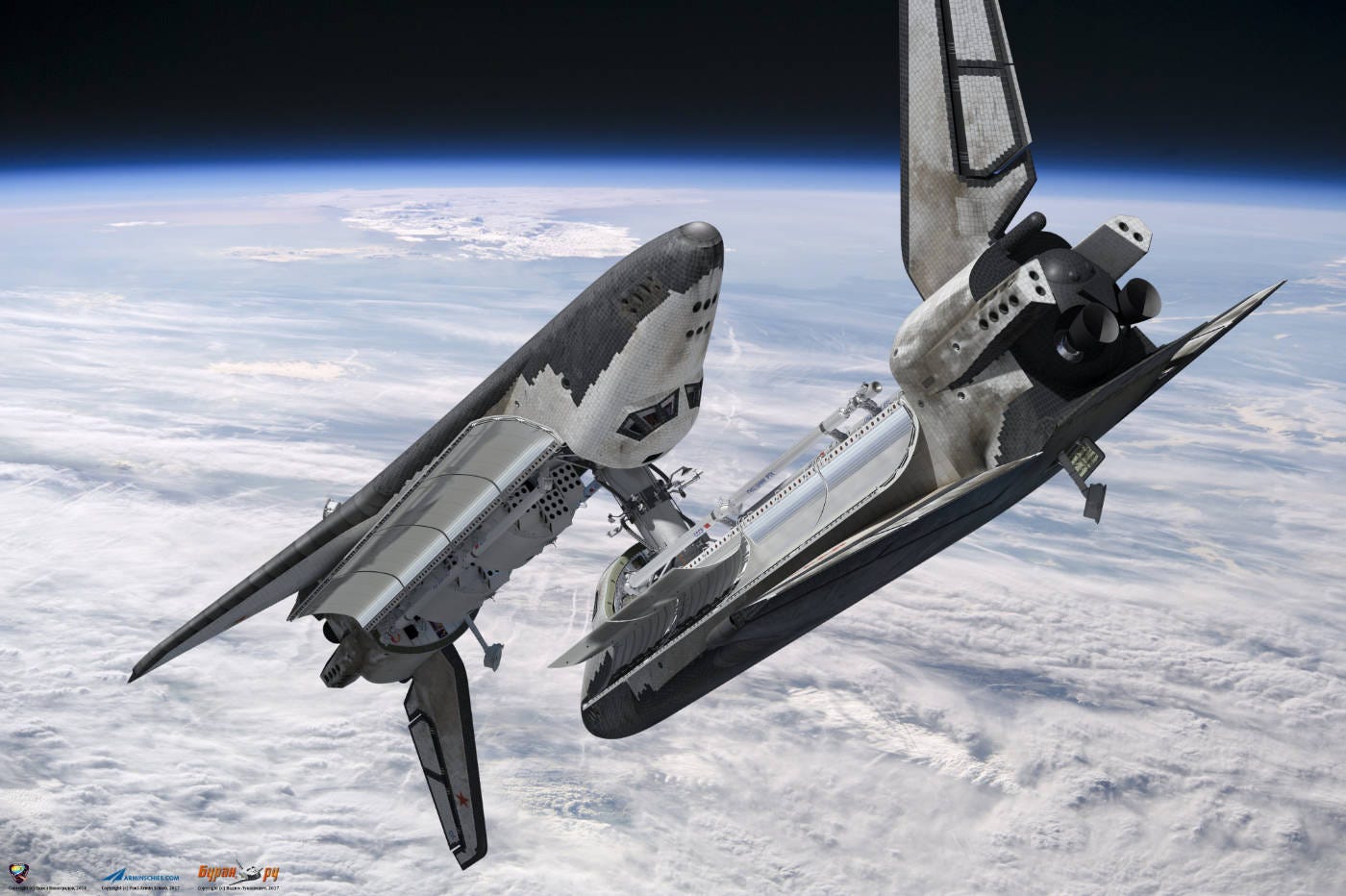
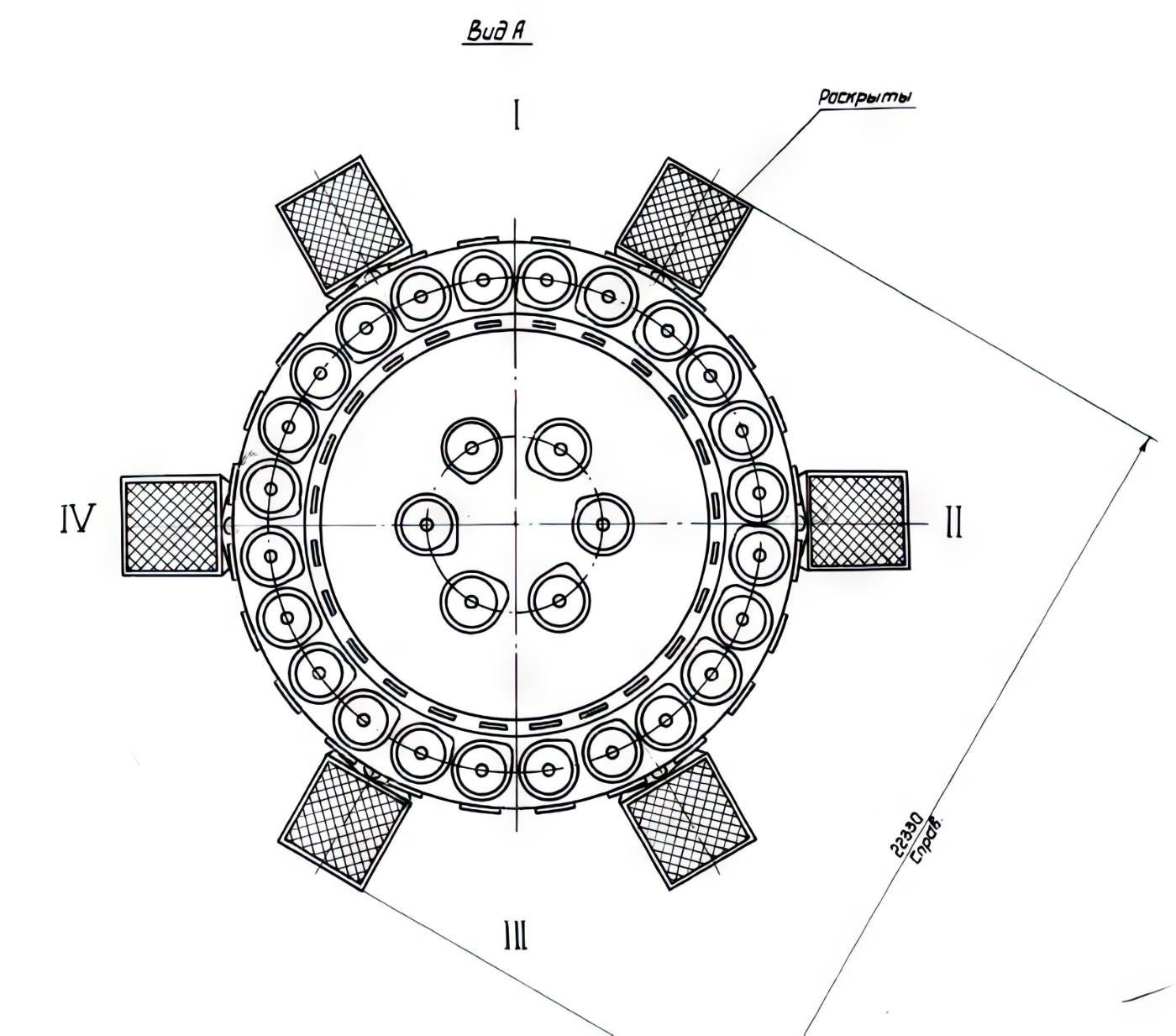

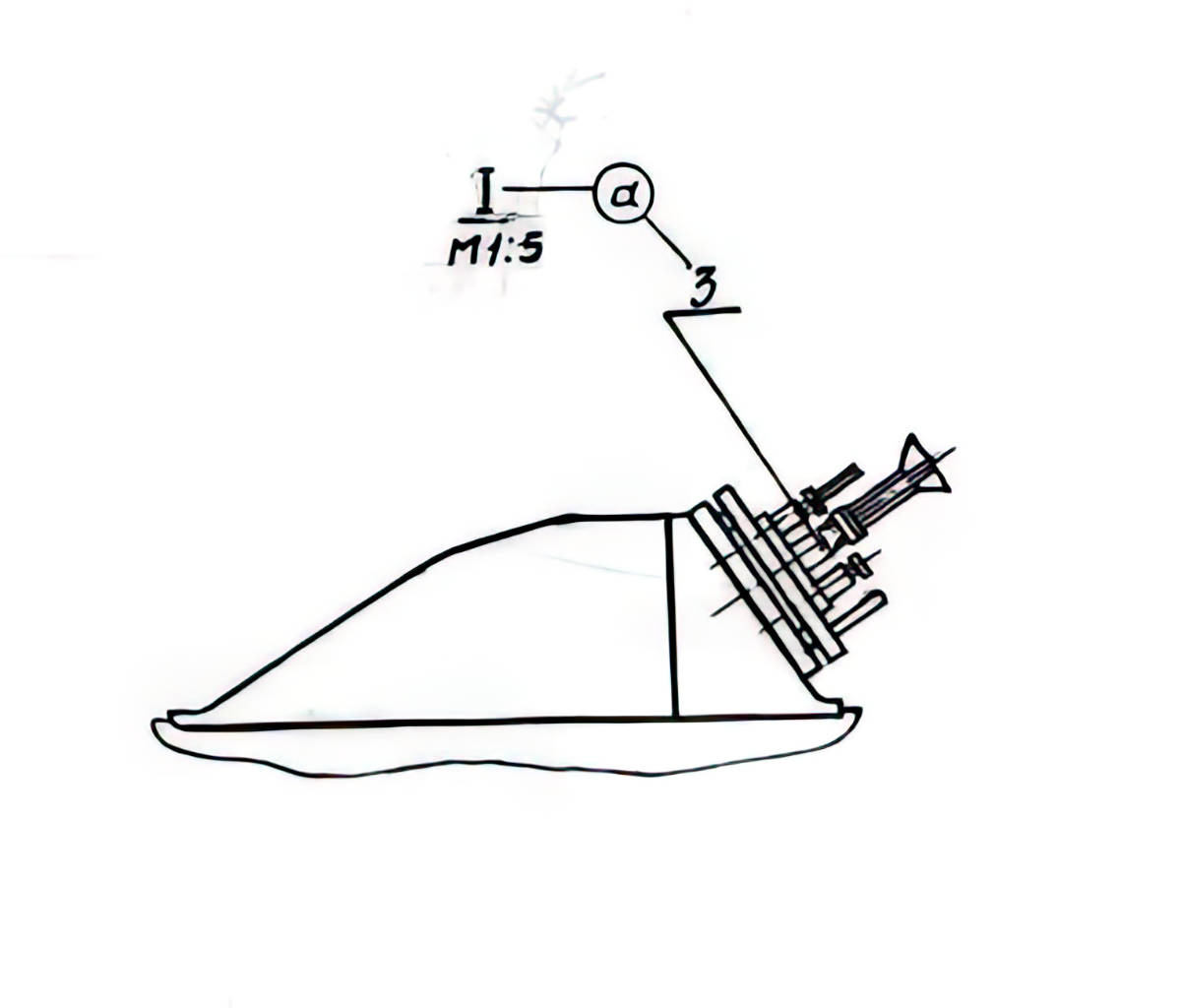
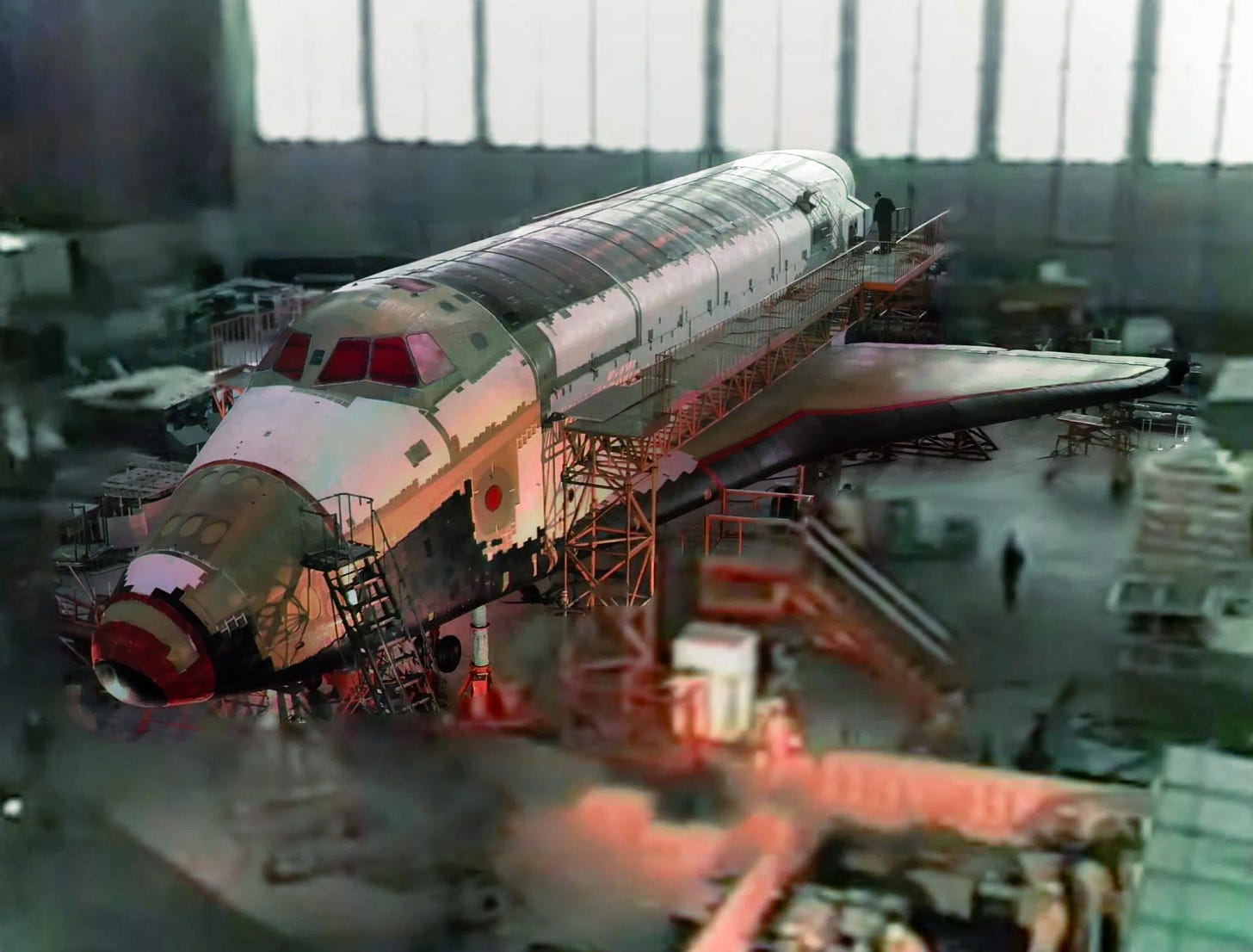
It’s interesting that ASW was an enumerated primary task for this system. I’ve occasionally seen oblique references to Soviet space-based submarine tracking tech in the ‘80s. I’ve been unable to find open information on that topic but this would certainly imply they were anticipating it a decade earlier.